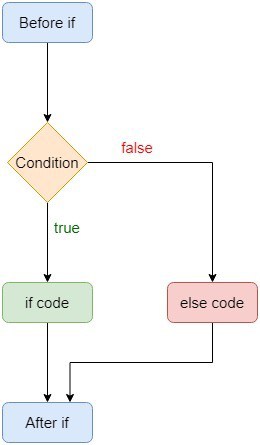1. 条件控制结构概述
在 Java(以及其他主流编程语言)中,条件控制结构是程序逻辑中非常核心的一部分,它允许我们根据不同的条件执行不同的代码路径。
最常见的两种条件控制结构是:
if-else语句switch语句
它们的使用场景和性能表现各有不同,本文将从多个维度进行对比分析,帮助你更好地选择适合的结构。
2. If-Else 与 Switch 的基本区别
2.1 逻辑分支数量
if-else:适用于两个分支的条件判断,也可以通过else if扩展为多个分支,但可读性会下降。switch:天生支持多个分支,每个case表示一个分支。
2.2 语法结构对比
✅ if-else 示例
int value = 2;
if (value == 1) {
System.out.println("Case 1");
} else if (value == 2) {
System.out.println("Case 2");
} else {
System.out.println("Default");
}
✅ switch 示例(Java 12+)
int value = 2;
switch (value) {
case 1 -> System.out.println("Case 1");
case 2 -> System.out.println("Case 2");
default -> System.out.println("Default");
}
3. If-Else 与 Switch 的核心对比
3.1 可读性对比
| 项目 | if-else |
switch |
|---|---|---|
| 多条件判断 | ✅ 灵活但易嵌套深 | ✅ 更清晰简洁 |
| 新增分支 | ❌ 需考虑逻辑顺序 | ✅ 可随意增删 |
| 易维护性 | ❌ 分支多易出错 | ✅ 更易维护 |
⚠️ 踩坑提醒:过多的
else if分支容易造成“金字塔式代码”,可读性和维护性都很差。
3.2 支持的条件类型
| 类型 | if-else |
switch |
|---|---|---|
| 布尔表达式 | ✅ 支持 | ❌ 不支持 |
| 常量表达式 | ❌ 不支持 | ✅ 必须使用常量 |
| 变量比较 | ✅ 支持 | ❌ 不支持(Java) |
✅ 注意:Swift 等语言允许在
switch中使用变量表达式,但 Java 不支持。
3.3 Fall-Through 陷阱
switch 语句的一个经典陷阱是 Fall-Through,即忘记写 break,导致多个 case 被连续执行。
✅ 示例(C语言)
int value = 1;
switch(value) {
case 1:
printf("1");
case 2:
printf("2");
default:
printf("Unknown");
}
输出结果:12Unknown
⚠️ 踩坑提醒:Java 的
switch也存在 Fall-Through,必须显式使用break。Java 12+ 引入了->语法,可避免该问题。
3.4 内部实现机制对比
| 机制 | if-else |
switch |
|---|---|---|
| 实现结构 | ✅ 抽象语法树(AST) | ✅ 跳转表(Jump Table) |
| 时间复杂度 | ✅ O(n) | ✅ O(1)(理想情况) |
✅ switch 内部优化示例
对于如下 switch 结构:
switch (i) {
case 1: printf("case 1"); break;
case 11: printf("case 11"); break;
case 111: printf("case 111"); break;
}
编译器可能生成如下跳转表:
typedef void (*func_ptr)(void);
func_ptr jump_table[] = {case1, case11, case111};
if (i >= 1 && i <= 111) {
jump_table[i - 1]();
}
✅ 优势:
switch在 case 值连续或稀疏但分布均匀时,跳转效率高。
3.5 性能对比总结
| 场景 | 推荐结构 |
|---|---|
| 条件分支少,且值分布不均 | ✅ if-else |
| 条件分支多,且值分布均匀 | ✅ switch |
| 布尔判断 | ✅ if-else |
| 枚举匹配 | ✅ switch |
| 需要 Fall-Through(故意) | ✅ switch(需谨慎) |
⚠️ 注意:在现代 JVM 中,两者的性能差异通常可以忽略不计,可读性和可维护性应优先考虑。
4. 总结与建议
| 对比维度 | if-else | switch |
|---|---|---|
| 可读性 | ❌ 多分支复杂 | ✅ 清晰简洁 |
| 灵活性 | ✅ 支持任意表达式 | ❌ 仅支持常量 |
| 性能 | ❌ O(n) | ✅ O(1)(理想) |
| 维护成本 | ❌ 高 | ✅ 低 |
| Fall-Through | ❌ 无 | ✅ 有(需注意) |
✅ 推荐使用场景
- ✅
if-else:用于布尔判断、条件值不固定、分支较少或值分布不均的场景 - ✅
switch:用于枚举匹配、分支较多且值分布均匀的场景,Java 12+ 推荐使用->语法避免 Fall-Through
✅ 最佳实践建议
- 多于 3 个分支时优先考虑
switch - 使用 Java 12+ 的
switch表达式语法提升可读性 - 避免手动 Fall-Through,除非有明确需求并加注释说明
- 保持每个分支逻辑简单,避免在 case 中嵌套复杂逻辑
📌 附图说明:
这些流程图清晰地展示了 if-else 和 switch 的执行流程差异。

